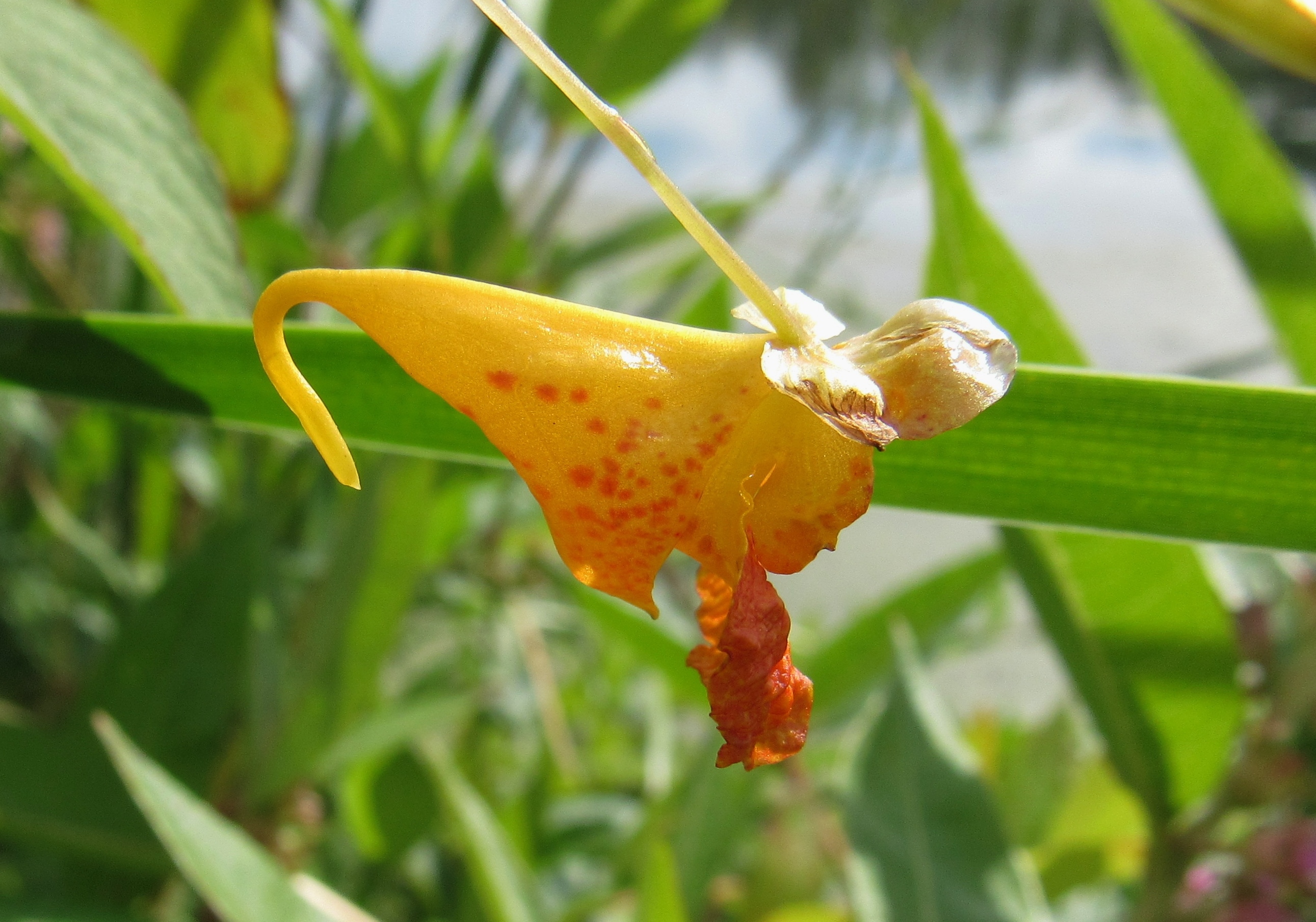Wilder Side of Oakland County
Some of the most amazing wildland plants of Oakland County go unnoticed along trails and pathways as we hurry about in the frenzy of late summer activity. One of these plants is a late-blooming beauty, a three to four foot tall delicate native wildflower of moist soils, sun-dappled stream banks, and wetland edges. This one holds an explosive secret! This is the story of the Spotted Jewelweed (Impatiens Capensis), a wildflower with a much loved, yet misleading, nickname “Touch-me-not.”
Unlike wetland-loving poison sumac that often grows very near Spotted Jewelweed, this plant is safe to touch. So why the name “touch-me-not”, a name that seems to imply a warning? The secret is exposed when the seed pods are ripe, and that time is now. One of my greatest pleasures when hiking with a group is to find a dense cluster of Jewelweed and have the wide-eyed children and often equally excited adults, gently touch the ends of swollen seed pods. What happens? They seem to explode when touched and launch seeds into the air, some landing almost a yard away. This adaptation assures the plants thrive, for if the seeds land in fertile soil, or drifts in a stream to an exposed bank, they germinate assuring the propagation of this common annual.
Ruby-throated hummingbirds fuel up on the Jewelweed nectar hidden within the orange trumpet-like red spotted blossoms, and like the honey bees that swarm around the flowers, they are highly efficient pollinators. If a hummingbird even lightly bumps into a seed pod as it hovers to sip nectar the projectile seed will launch. It’s not just the seeds that fascinate little kids and sometimes startle the soon to migrate hummingbirds. You have already discovered why the plant is called “touch-me-not”, and starts with the name “spotted”, but why “Jewelweed?” To discover the answer, simply take a leaf and hold it underwater and it suddenly appears silvery like a jewel, and the magic within the name gets even better! After a gentle rain each moist leaf sparkles as if covered with light-reflecting tiny jewels.





Spotted Jewelweed draws the attention of herbalists, woods-wise backpackers, and pharmaceutical companies. The plant has a long history of use by Native Americans and early herbalists as a preventive poultice and post-exposure treatment for poison ivy, poison oak and poison sumac. A wealth of literature exists, some spiced with questionable folk remedies, for all sorts of other skin disorders and ailments. I would not go so far as to say it’s the panacea for all skin irritations, but I have created a salve from the translucent stems and leaves and applied it to mosquito bites and stinging nettle irritations and my results were good. Perhaps a controlled experiment is in order next time, leaving some bites, scrapes, irritations and poison ivy or sumac rashes untreated, and others coated in the soothing gooey-pale green poultice of mushed stems and leaves of this late-blooming beauty from the Wilder Side of Oakland County.
Text and photos by Jonathan Schechter, Nature Education Writer for Oakland County Parks.
Visit Oakland County Parks for information on all 13 Oakland County Parks. Follow Destination Oakland on Facebook and Twitter for more fun in Oakland County!

